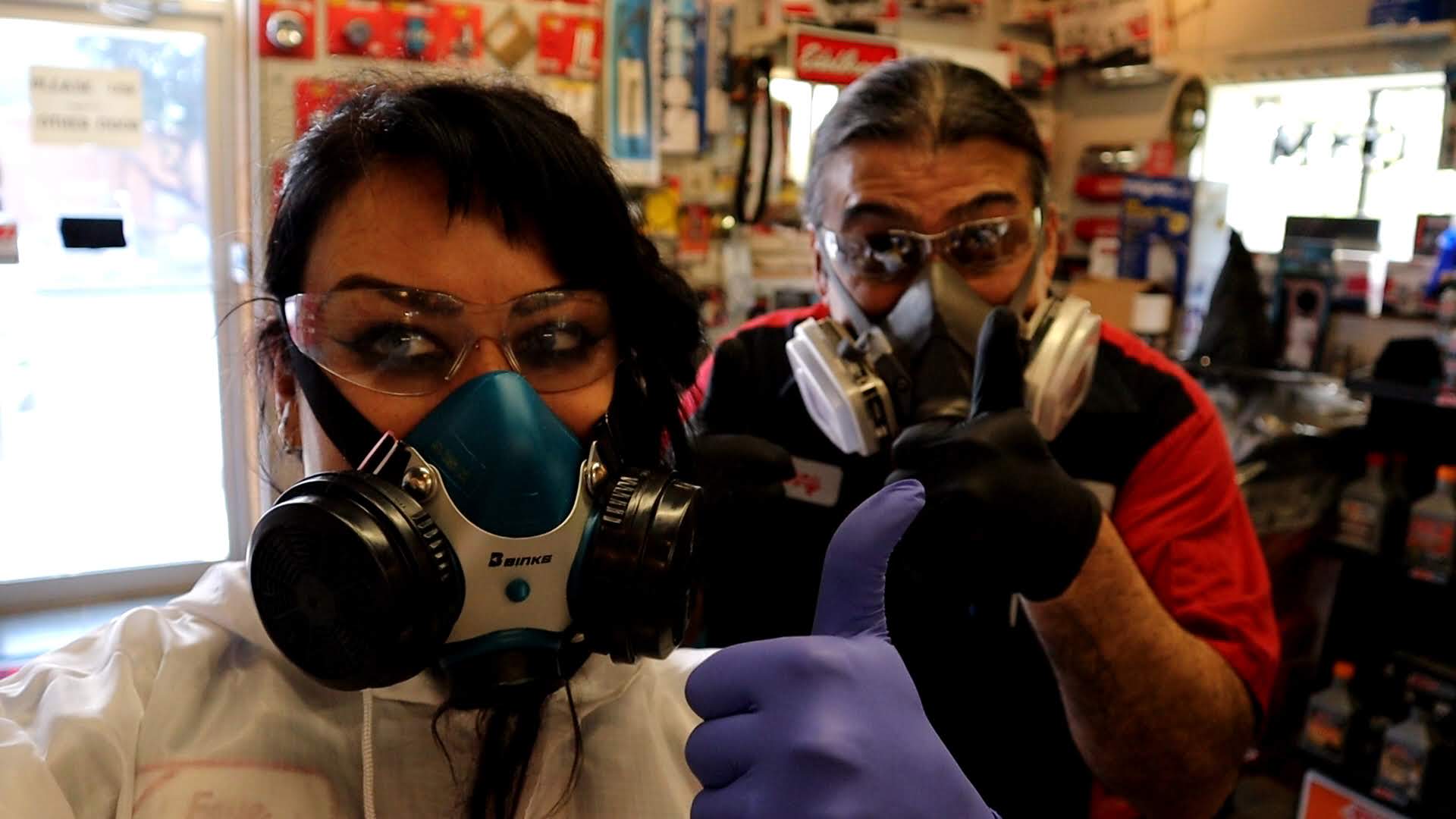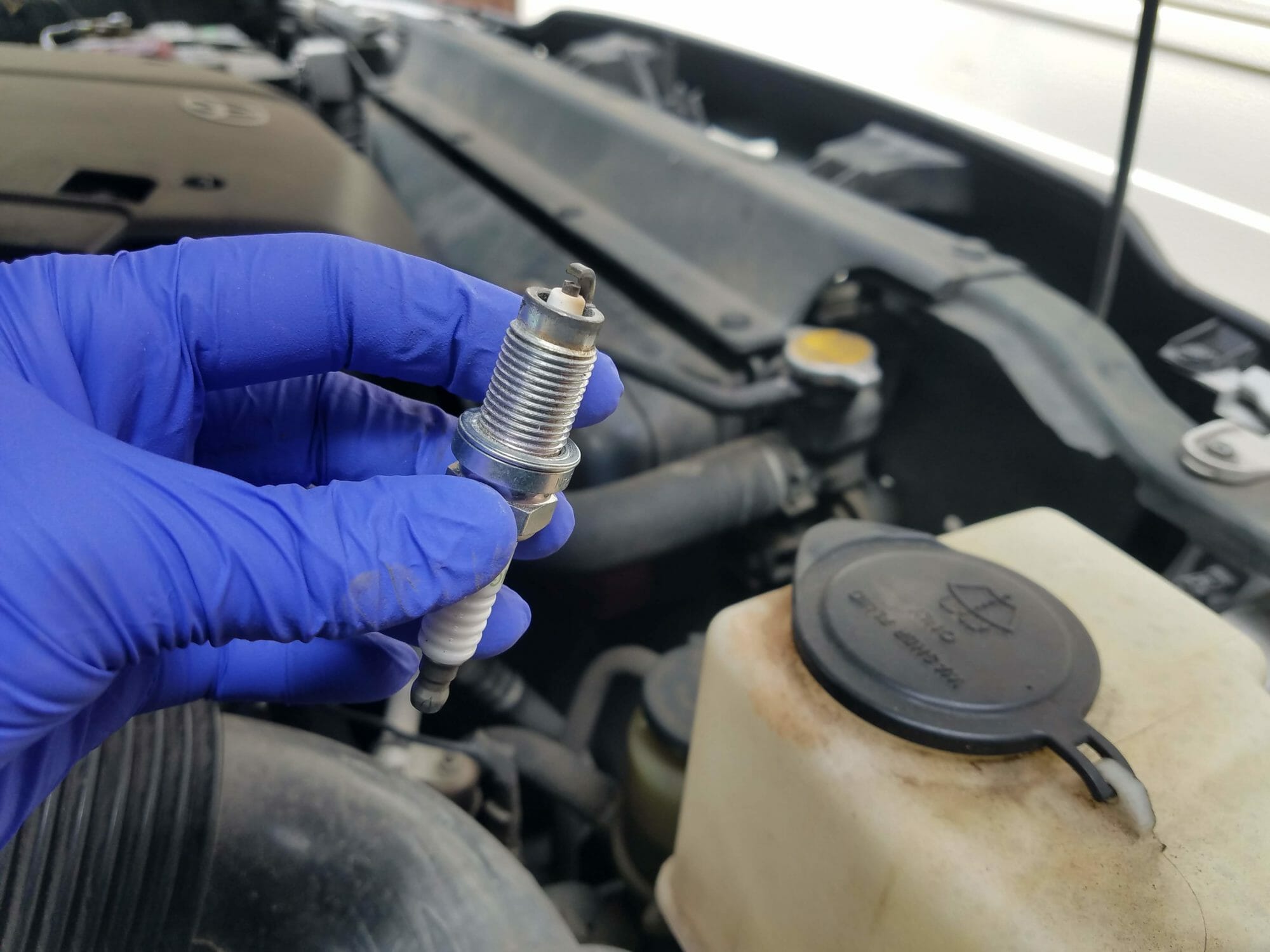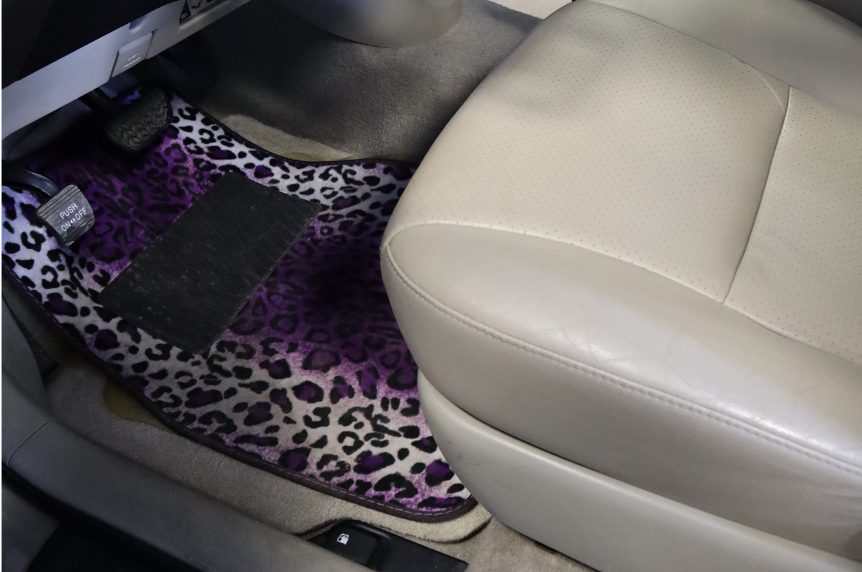5 Ways My Independent Auto Repair Shop Has Changed Due to COVID-19
Faye Hadley / Host, All Girls Garage

The COVID-19 pandemic has impacted my garage, as well as countless others across the country. Just because our doors are still open, does not mean that we aren’t taking a huge hit. We’re spending extra time cleaning every car, spending more money on disposable items, and seeing fewer of the maintenance jobs that would normally help offset costs.
Here are five ways our shop is adjusting to business in the post-pandemic world:
1. Nothing routine about routine maintenance
As technicians living the flat-rate lifestyle, we all pray for “gravy” work – those jobs that we do over and over and over again and are able to perform in a fraction of the time for which we are paid. If we’re lucky, jobs like these make up a big portion of our daily work. The time saved on a “gravy” job typically helps to make up for some time lost on other jobs, such as a particularly difficult diagnosis that you only charge an hour for, even though it takes you two; or spending a long time on the phone with a confused or needy customer.
Most gravy work comes in the form of routine and preventative maintenance – almost all of which has slowed to a complete halt in the wake of COVID-19. With vehicle owners unsure of what the future will bring, vehicle care often takes a backseat to guaranteeing food on the table for their families. Because many folks are now working from home or have been laid off entirely, the types of services that we provide have changed dramatically.

Our more mechanically inclined customers have switched to performing their own maintenance when they can. If these customers bring their car to the shop, it’s now for the “higher brain-power” problems that someone stuck at home with a little bit of skill can’t just figure out for themselves. These tasks normally involve more time, and sometimes more cost, since a higher tech (and therefore higher-dollar) power scan tool may be needed.
Meanwhile, others have chosen to neglect maintenance entirely and only ask us to perform absolutely essential repairs. Keeping within the customer’s budget while fixing potentially hazardous issues can be tricky. For example, I recently dealt with a customer whose timing belt was about to break; but they also had a very expensive EVAP canister that was leaking. The gas smell emitting from the leak was making the customer feel nauseous while driving; but if their timing belt broke, their engine was going to basically self-destruct!
We often find ourselves working with customers to fit a necessary repair into a specific – and limited – budget. This requires learning a lot about the customer’s needs and goals with the car and providing different levels of warranty for the repairs. In the end, it also means a lot more energy and effort to earn that same dollar, despite working the same (if not more) hours in a day.
2. Handshake no more
Because of the nature of my work, I am already in the habit of shaking my customers’ hands with a fresh pair of gloves on; but today many customers do not feel comfortable approaching me or the rest of my team to even drop off their keys.
To adjust, we instituted a before- and after-hours drop off/pickup only policy, and we added a key-drop lockbox to our door. We’ve also changed the way that customers approve repairs. Instead of getting a physical signature in person, we switched to an online option for receiving the customer’s consent to drive their vehicle on public roads, and consent to perform the outlined work.
3. Navigating socially distant communication and building trust
Transparency and communication make up a big part of the service that I like to provide to my customers. I enjoy walking them into the shop and actually showing them the problem or the broken/worn out part on their car before delivering a repair order with a large bill attached to it. This ensures that the customer has a better understanding of the necessity of the repair, as well as better trust in my technicians and me.
With our new before- and after-hours drop off policy, we’ve relied heavily on our shop software to do the talking for us. I use a program called Shop-Ware that allows me to upload multiple photos and videos to a repair order, and easily share them with my customers. They can open a repair order right from their smartphone, view the notes and recommendations, and approve the repairs in real time. I get an instant notification on my phone that they have approved the job, and I am able to get to work right away. This also helps to minimize down-time (instead of wrenching time!) by reducing the hours we spend calling our customers and explaining what we found.

4. One-time use EVERYTHING
I am a total Earth-loving hippie at heart; at my shop we’re crazy about recycling, we use fluids and chemicals that are as non-toxic as possible, and we also stay away from disposable items whenever we can. In the wake of COVID-19, and with the concern about spreading the virus to my customers through the use of our reusable seat covers and floor mats, we have temporarily switched to disposable everything.
While this has definitely lessened the worry of our customers, it really does bother us in terms of having a larger impact on our planet. Even though we use recycled paper floor mats, it just isn’t the same as our lovely, purple, leopard print, washable and reusable mats!

When sanitizing our customer’s cars and keys, we use disposable towels rather than our linen service’s rags. We change our gloves before switching between jobs and cars, even if our gloves are still clean. (Gone are the days of just wiping off the grease with a little brake parts cleaner and a rag in between jobs.) Around here, a box of high-end gloves would normally last a week; now that same box barely lasts a day!
Unfortunately for businesses focused on environmentally friendly practices, there’s only so much you can do during these times to reduce waste. In addition to recycled paper floor mats (which we recycle when we’re done with them), we always use organic and plant-based cleaning products at my shop.
5. Dealing with supply chain disruption
To save my customers and myself a dollar (or hundreds), I often purchase OEM parts from online sources a couple days ahead of time if I can predict the parts that will be needed. Interestingly enough, despite auto repair being an “essential” service, many large online retailers do not consider auto parts essential, and shipping times have been delayed to the point of rendering this more cost-effective option unusable for the time being. This is yet another one of those invisible costs that affects our net profits at the end of the month, and it’s honestly a tough hurdle to overcome.
One possible way to adjust is by scheduling repairs further out, although this can increase the chance of a customer either backing out of the repair or taking their business elsewhere. I feel lucky to have a very high customer retention rate, which is a blessing in times like these!
These are only some of the ways that my independent auto repair shop has had to adjust to the new challenges brought on by COVID-19. As business owners, we are already used to being extremely hard working, creative, and adaptable; but every one of the five points above represents a major impact on our profitability as a shop. At a time when necessity is truly the mother of invention, we’ve found ourselves leaning more and more on our creativity and problem-solving skills to keep our customers rolling and our doors open.
0 Comments